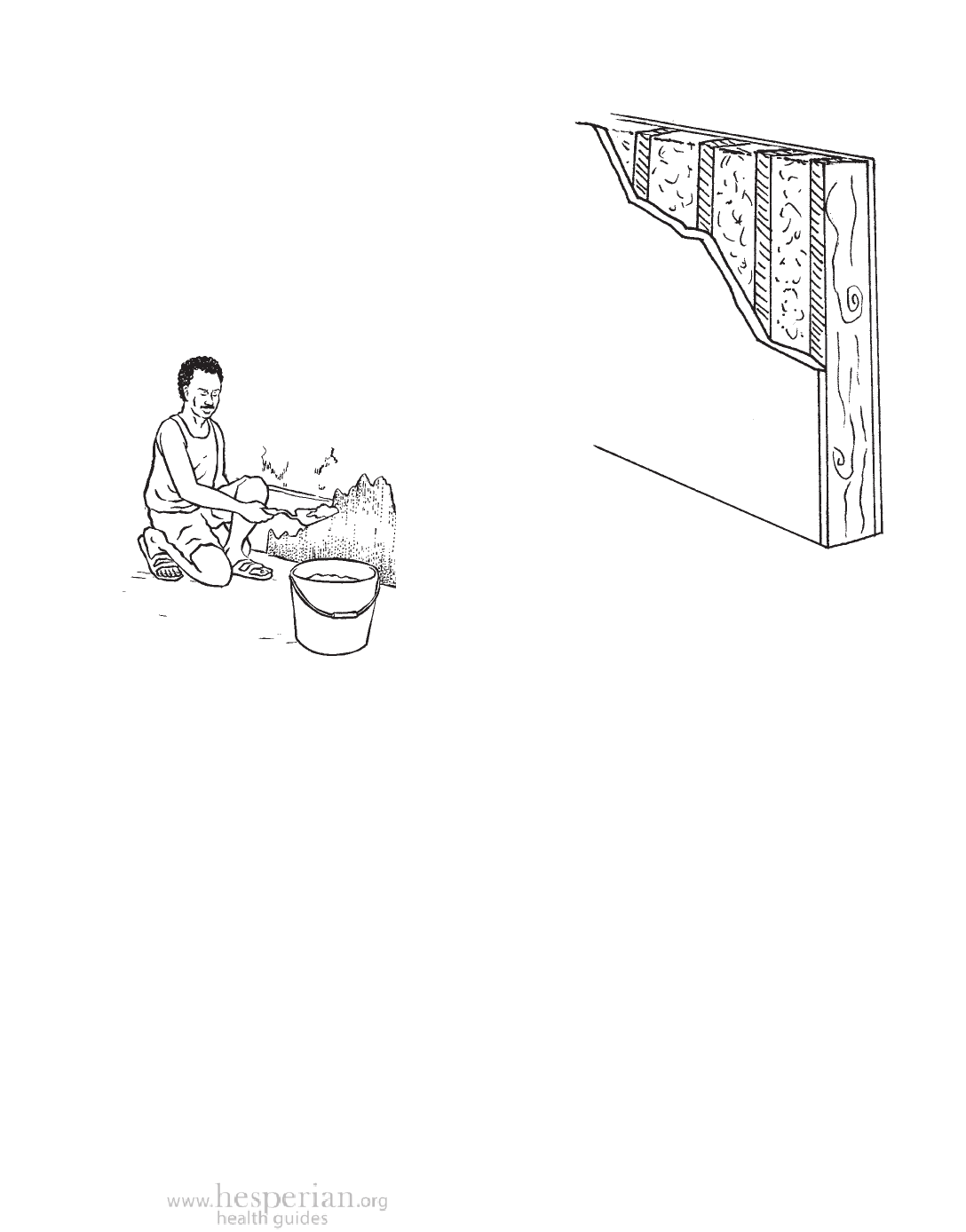
Building a Healthy Home 379
Protect against heat and cold
Insulation is material that protects against
heat and cold. Rather than having a single thin
wall and a roof without a ceiling, a well-insulated
house has a space between the outside and inside
walls, and a ceiling below the roof. These spaces are
filled with materials such as sawdust, wool, straw,
cork, or cardboard or paper soaked in diluted borax and
dried (to prevent termites from eating it).
In wooden houses,
double walls with insulation
between keep heat in and cold out.
Sealing cracks in the walls
makes a big difference in
keeping cold out and heat in.
If you cannot
build double walls,
cover inside walls with
paper, foam, cardboard, or similar
materials. This will add some insulation.
Thatch roofs give good insulation. So do
floors of brick and compacted earth. To keep
heat in or out of the house, seal cracks or holes
around windows and doors. Cover windows to
help keep the home cooler during the day and
to retain heat at night. Windows that open will
also allow air to flow for good ventilation.
Choosing building materials
The materials used to build a house can make the difference between an
uncomfortable shelter and a healthy, beautiful one. But when forests and
watersheds are damaged, natural building resources such as wood, thatch, and
other plant materials are lost. And when large amounts of concrete and other
“modern” materials become available, traditional materials and knowledge of
how to build with them is lost, or is no longer valued by many people. The best
building materials:
• come from the earth, and can be reused or returned to the earth
when the life of the building is over.
• are harvested and produced locally, and fit the local climate.
• do not contain harmful chemicals or require large amounts of
energy to produce.
A Community Guide to Environmental Health 2012